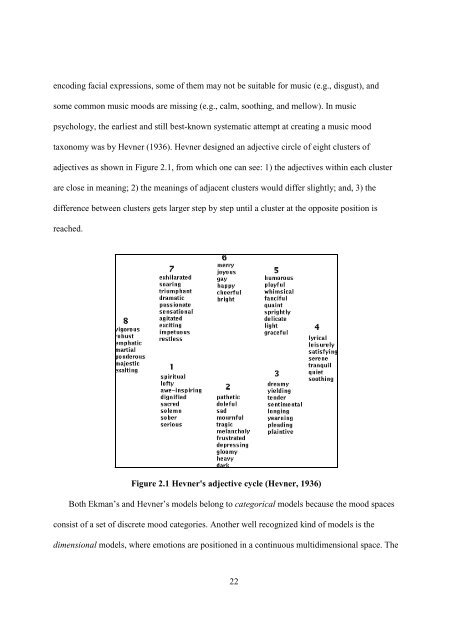improving music mood classification using lyrics, audio and social tags
improving music mood classification using lyrics, audio and social tags
improving music mood classification using lyrics, audio and social tags
Create successful ePaper yourself
Turn your PDF publications into a flip-book with our unique Google optimized e-Paper software.
encoding facial expressions, some of them may not be suitable for <strong>music</strong> (e.g., disgust), <strong>and</strong><br />
some common <strong>music</strong> <strong>mood</strong>s are missing (e.g., calm, soothing, <strong>and</strong> mellow). In <strong>music</strong><br />
psychology, the earliest <strong>and</strong> still best-known systematic attempt at creating a <strong>music</strong> <strong>mood</strong><br />
taxonomy was by Hevner (1936). Hevner designed an adjective circle of eight clusters of<br />
adjectives as shown in Figure 2.1, from which one can see: 1) the adjectives within each cluster<br />
are close in meaning; 2) the meanings of adjacent clusters would differ slightly; <strong>and</strong>, 3) the<br />
difference between clusters gets larger step by step until a cluster at the opposite position is<br />
reached.<br />
Figure 2.1 Hevner's adjective cycle (Hevner, 1936)<br />
Both Ekman’s <strong>and</strong> Hevner’s models belong to categorical models because the <strong>mood</strong> spaces<br />
consist of a set of discrete <strong>mood</strong> categories. Another well recognized kind of models is the<br />
dimensional models, where emotions are positioned in a continuous multidimensional space. The<br />
22
















